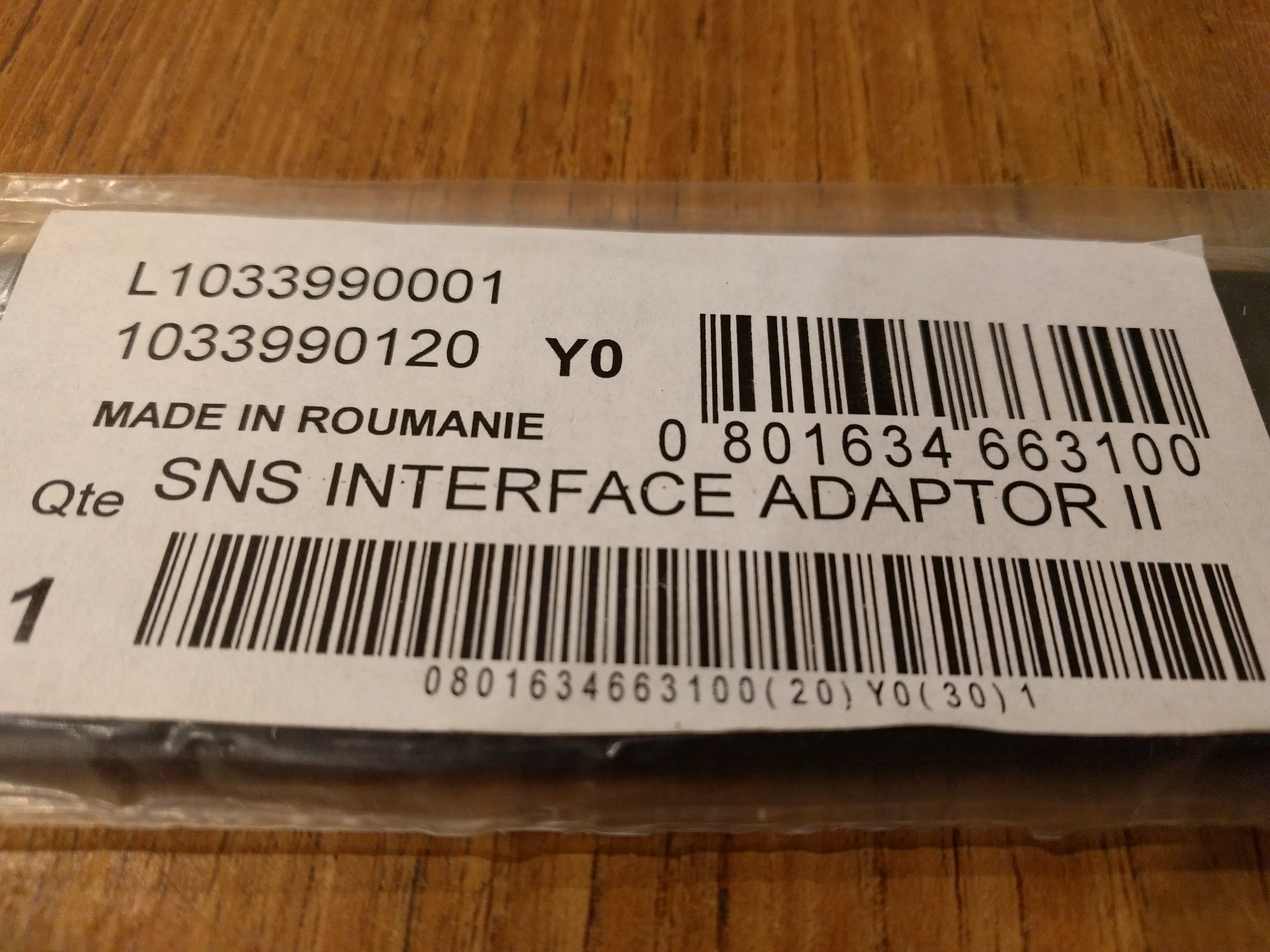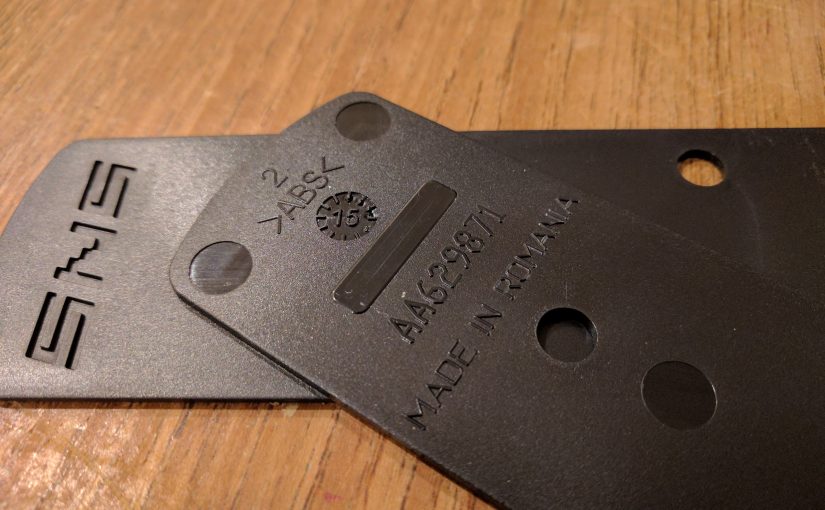I was researching Salomon’s adaptor to mount SNS bindings on top of NIS plates, but very few web stores that carried it all had a low resolution images of something black and oblong. It was obvious from description that it was meant to be used to mount SNS bindings to an NIS plate, but I could not understand what benefits it offered. Recently I bought a pair of the adaptors, and hopefully this post would help someone who would like to know more about it.

I’ll cut to the chase, the so-called interface adaptor is just a flat piece of ABS plastic, about 1.5 to 2 mm thick. I was quite underwhelmed when I was handed it – I was expecting that it would at least have some relief on the bottom side, to mate to the NIS plate, or even slide over the NIS plate and lock on top of it. Nope.

In my opinion, this “interface adaptor” is, at best, nothing but a drilling template, or, at worst, something that makes the problem of mounting an SNS binding onto an NIS plate worse. Here is why:
- The screws that come with the SNS binding penetrate into the ski by about 10-12 mm. The NIS plate itself is about 3mm thick, which means that with an SNS binding mounted on top of the NIS plate, the screws will penetrate the ski by 3mm less than designed. The SNS interface adaptor would rob the screw of additional 2mm of penetration, making the binding installation even weaker. I think that it would be sensible for Salomon to distribute a set of longer screws with the adaptor, or at least make such set available separately.
- One of the objection to mounting an SNS binding over NIS plate is that the binding would sit a bit higher above the ski top surface than designed. Again, an SNS adaptor would add another 2mm to that height.
- The SNS adaptor would create a huge number of cavities for moisture to gather. The NIS plate has lots of pits and notches. Imagine covering it with a flat plate – this would create a lot of opportunities for moisture entrapment, which could possible creep into the screw holes. This could be mitigated by applying some sealant before placing the SNS adaptor, but this would make installation of bindings messier.
In short, I don’t think that the adaptor is needed at all. SNS bindings install over NIS plates just fine without it.

Thank you for this review. I bought a pair of skis with the plate and wasn’t sure what to do with my bindings.
I like how you post your learnings and experiments here to help others. Appreciated!
I’m glad you found this useful, thanks for leaving a note.
Hi! I could have sworn I’ve been to this blog before but after looking at
a few of the posts I realized it’s new to me. Regardless,
I’m definitely happy I came across it and I’ll be bookmarking it and checking back frequently!
This was my thought. It’s end of 2020 and I am looking to install a set of SNS Pilot onto a Fischer IFP mount.
I think I will physically remove the IFP mount, and epoxy the SNS interface plate (ABS plastic strip) onto the ski itself. The more shallow screw penetration isn’t settling on me.
I have attempted removing the NIS plate from Fischer skis, I wrote it up in my post here: https://arcady.genkin.ca/2017/02/removing-nis-plate-to-install-sns-binding/
It was a bit of work, and the result looks a bit ugly. Epoxying the interface plate in place of the NIS plate should definitely address the “ugly” part, if done accurately. Unfortunately, that’s even more work to glue the adapter in place.
Be mindful of the balance point on the ski, don’t rely on aligning the interface plate with the visible footprint of the removed plate. In my case I found that the balance points on the two skis were not symmetric.